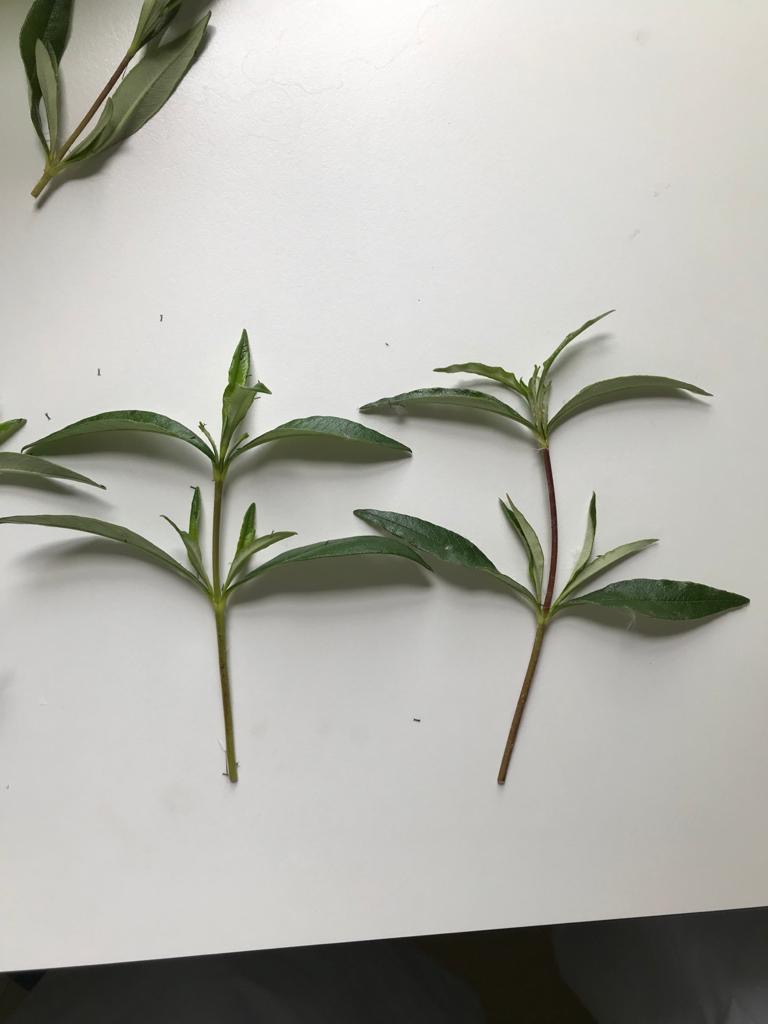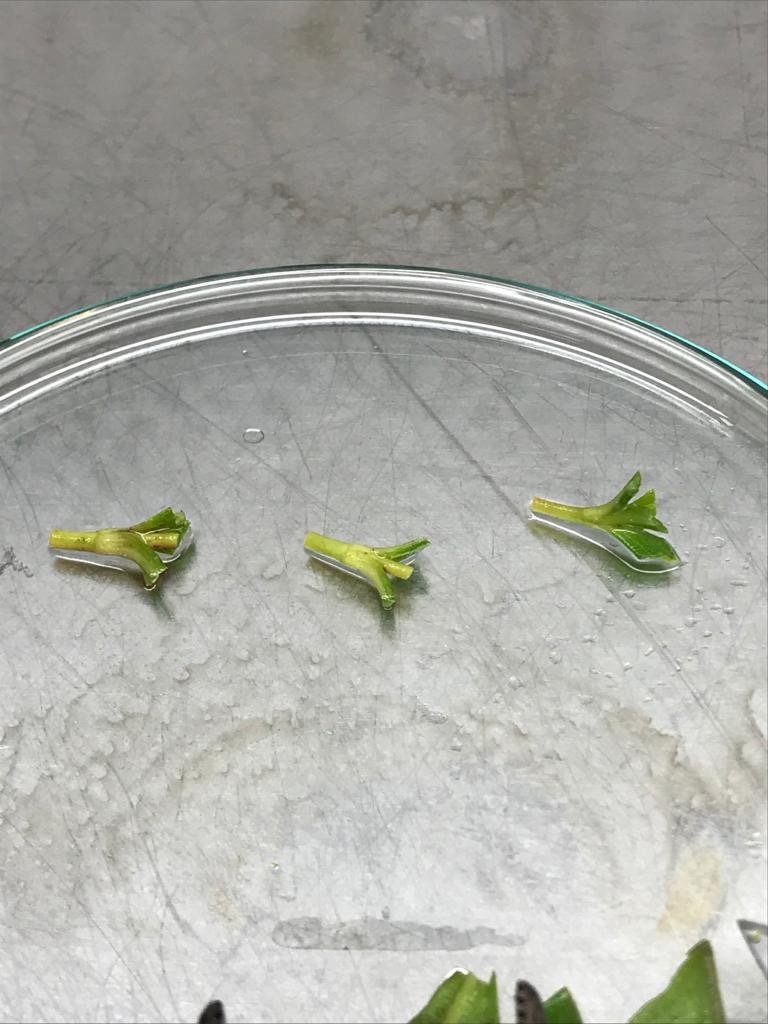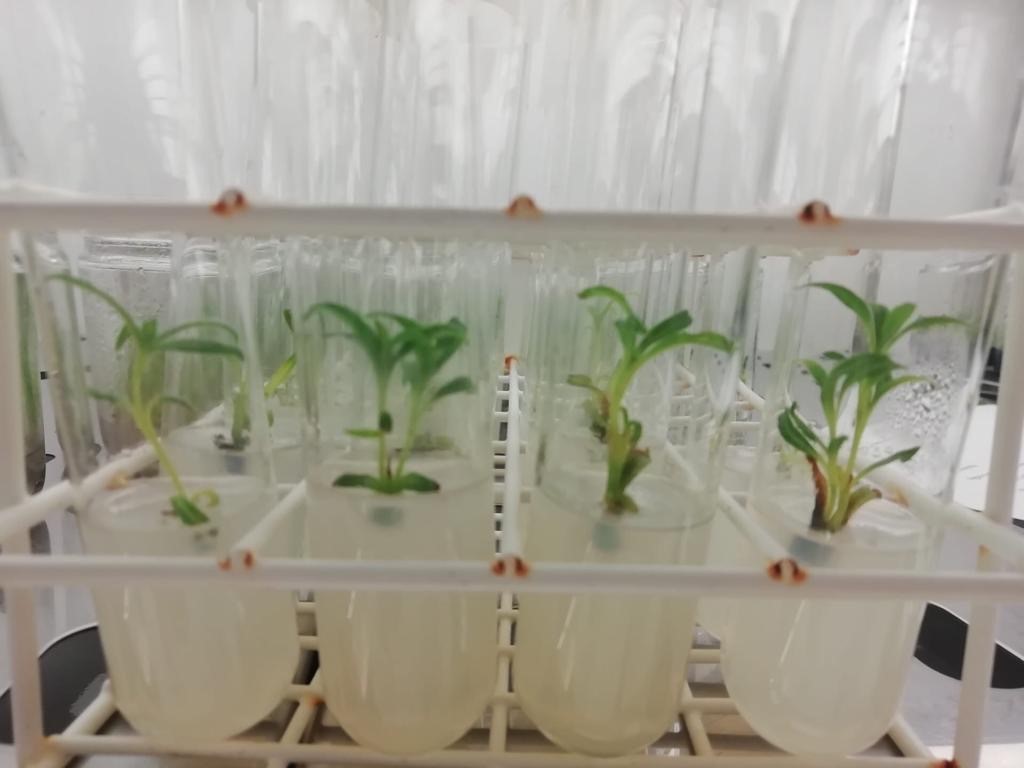This project aims to use a widely distributed species in the Iberian Peninsula, Cistus ladanifer, to set up a common garden using families collected from 8 populations from the wide range of the study, and two populations from the region under study for comparison purposes. According to Quintela-Sabarís et al. (2011) in a phylogeographic study of the specie, 4 distinct clusters were found: Morocco (M), Southeast Andalusia (AS), Portugal (P) and the rest of Spain (S). The 8 most genetically diverse populations based on the above-mentioned study will be selected representing the 4 phylogeographic clusters.
The experimental design will be of complete random blocks with 5 repetitions and 7 individuals per repetition. The plants in the same repetition will be planted in rows. Each population will be represented by 5 families (half week of seeds harvested from the same mother plant), 1 plant per family and per repetition. The mother plants will be selected in the same population, with at least 10 m difference, to avoid collecting seeds from related plants. The spacing will be 0.75 m. In common experimental garden rows will be planted to eliminate side effects. Two additional plants will be planted at the bottom of each row for destructive analysis to estimate morphological parameters in the 1st and 2nd year after planting, and to allow the construction of allometric equations. The morphological analysis of the plants will be done by measuring the IAF (leaf area index), leaf and shoot biomass, green and dry weight and shoot growth. The morphology and potential biomass production of cistus populations will be done by developing predictive models for the estimation of morphological parameters using non-destructive methods.
Phytochemical and pharmacological analyses will be carried out: i) quantification of the main flavonoids and diterpenes in leaf exudate using a reverse phase HPLC-DAD method using standards, ii) quantification of labdanum resin and methanol resinoid in the leaves (alkaline extraction with acid precipitation followed by cold methanol waxes), (iii) chemical characterization ‘methanol resinoid’ using the classical turbidimetric method (phenols and flavonoids equivalents) and HPLC-MS/MS, and (iv) characterization of ‘methanol resinoid’ bioactivity using in vitro antioxidant and anti-inflammatory tests.
In addition, we will improve our knowledge of the range of species distribution to better assess niche ecological changes using contrasting global warming scenarios, to reveal the impact of environmental heterogeneity on genetic diversity and rockrose structure, to design regions of provenance and to select clones for certification for deployment. We will use the species distribution according to the bibliographic survey, to build a data set with a grid level of 1-Km2. The plots will be characterized using bioclimatology, lithology, topography, soil type and vegetation. The data collected will be stored in a GIS database associated to each plot. With the data obtained, a multivariate exploratory statistical approach will be made with the information collected. Ecological Niche Modelling will be done using MaxEnt and other appropriate software (Merow, Smith & Silander, 2013, Phillips & Dudík, 2008, Phillips, Anderson & Schapire, 2006). Later, species will be distributed using contrasting global warming scenarios (Kriticos & Leriche, 2010), using the WordClim database to explore the effects of climate on species distribution. We will combine information from molecular markers (nuclear microsatellites and chloroplastics) and ecological niche modelling to study the supposed association between climate and spatial genetic structure and steppic variability. We will use causal modelling to analyze the potential influence of biophysical factors (current and niche suitability of the GMM) on observed patterns of genetic structure (Ortego et al., 2012, Sork et al., 2010). Additionally, we will design regions of provenance based on species suitability and develop a method for fingerprinting selected clones in these regions based on the molecular marker approach (Figueiredo, Canhoto & Ribeiro, 2013, Ribeiro et al., 2011). The best clones selected from the assay of provenance will be selected for conservation and implantation and for a future putative process of varietal patenting. In addition, in vitro propagation will be carried out for conservation and implantation purposes.


Os principais objetivos do projeto são os seguintes:
i) melhorar o nosso conhecimento sobre as tolerâncias ambientais das espécies utilizando a distribuição das espécies e um conjunto de dados de variáveis ecológicas.
ii) avaliar a dinâmica temporal do clima e da vegetação para prever as mudanças ecológicas nos nichos em cenários de aquecimento global
iii) estudar a influência da heterogeneidade ambiental na diversidade genética e na estrutura da esteva
iv) para a conceção de regiões de proveniência da esteva
v) tirar as impressões digitais dos clones selecionados com os fabricantes disponíveis.
vi) propagar a esteva através de métodos in vitro


Bibliografia:
Figueiredo, E, Canhoto, J, Ribeiro, MM. 2013. Fingerprinting and genetic diversity of Olea europaea L. ssp. europaea accessions from the cultivar Galega using RAPD markers. Scientia Horticulturae 156: 24-28.
Kriticos, DJ, Leriche, A. 2010. The effects of climate data precision on fitting and projecting species niche models. Ecography 33: 115-127.
Merow, C, Smith, MJ, Silander, JA. 2013. A practical guide to MaxEnt for modeling species’ distributions: what it does, and why inputs and settings matter. Ecography 36: 1058-1069.
Ortego, J, Riordan, EC, Gugger, PF, Sork, VL. 2012. Influence of environmental heterogeneity on genetic diversity and structure in an endemic southern Californian oak. Molecular Ecology 21: 3210-3223.
Phillips, SJ, Anderson, RP, Schapire, RE. 2006. Maximum entropy modeling of species geographic distributions. Ecological Modelling 190: 231-259.
Phillips, SJ, Dudík, M. 2008. Modeling of species distributions with Maxent: new extensions and a comprehensive evaluation. Ecography 31: 161-175.
Quintela-Sabarís, C, Vendramin, GG, Castro-Fernández, D, Isabel Fraga, M. 2011. Chloroplast DNA phylogeography of the shrub Cistus ladanifer L. (Cistaceae) in the highly diverse Western Mediterranean region. Plant Biology 13: 391-400.
Ribeiro, MM, Sanchez, L, Ribeiro, C, Cunha, F, Araújo, J, Borralho, N, Marques, C. 2011. A case study of Eucalyptus globulus fingerprinting for breeding. Annals of Forest Science 68: 701-714.
Sork, VL, Davis, FW, Westfall, R, Flint, A, Ikegami, M, Wang, H, Grivet, D. 2010. Gene movement and genetic association with regional climate gradients in California valley oak (Quercus lobata Née) in the face of climate change. Molecular Ecology 19: 3806-3823.
@ 2022 Cultivar. All rights reserved
